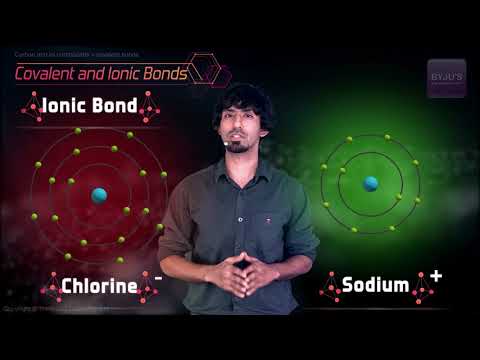Ionic Covalent And Metallic Bond
The attractive force which holds together the atoms or group of atoms in a chemical species is known as a chemic bond. The definition of thechemical bail as a shared electron pair could be extended to describe the dative bail and the elaboration of Lewis acid/base interactions.
Table of Contents
- Ionic bond
- Covalent bond
- What are Metallic bonds?
- Divergence Between Ionic bail, Covalent bond, and Metallic bond
- Recommended Videos
- Frequently Asked Questions – FAQs
Ionic bond
The ionic bail is the electrostatic force of attraction between two oppositely charged ions. Ionic bonds join metals to non-metals.
Covalent bond
The covalent bail is also called a shared bond. These bonds join non-metals to non-metals.
What are Metallic bonds?
Metallic bonds are the chemical bonds that join metals to metals.
Deviation Between Ionic bond, Covalent bond, and Metallic bond
To brand you sympathise how Ionic, covalent and metallic bonds are different from each other, here are some of the major differences between Ionic, covalent and metallic bonds:
| IONIC Bail | COVALENT Bail | METALLIC Bond |
|---|---|---|
| Occurs during the transfer of electrons | Occurs when two atoms share their valence electrons | The attraction of metal cations/atoms and delocalized electrons |
| Binding energy is higher than the metallic bail | Binding free energy is higher than the metallic bond | Binding energy is less than covalent and ionic bond |
| Low conductivity | Very low conductivity | Has high electrical conductivity |
| Non-directional bond | Directional bond | Non-directional bond |
| Present only in one state: solid-state | Present only in all three states: solid, liquid, gases | Present only in one state: solid-state |
| Not-malleable | Not-malleable | Malleable |
| College melting point | Lower melting betoken | High melting betoken |
| Non-ductile | Not-ductile | Ductile |
| Higher boiling betoken | Lower humid point | High boiling point |
These were some important differences between Ionic, covalent and metallic bonds.
Recommended Videos

To know differences betwixt other topics in chemistry yous can register to BYJU'Southward or download our app for simple and interesting content. India's largest chiliad-12 learning app with top-notch teachers from across the nation with excellent teaching skills. Detect notes, question papers for other subjects similar Mathematics, Physics, Biological science, and various competitive exams likewise. Enjoy learning with a nifty experience. Learning is no more deadening with BYJU'S.
Oft Asked Questions – FAQs
What are ionic bail examples?
The bail in sodium chloride, that is salt, is an example of an ionic bond. The valence electron of sodium is transferred to chlorine's outer electron shell. Ionic components are made up of molecules which have ionic bonding.
What are 3 types of covalent bonds?
Types of covalent bonds are: Single Covalent Bail. Double Covalent Bail. Triple Covalent Bond.
What are examples of metallic bonds?
Magnesium, sodium, and aluminium are examples of metallic bonds. Metallic bonding provides malleability, ductility, thermal and conductivity, opacity, and lustre, which are all characteristics of metals.
What determines whether a bond is ionic, covalent, or metallic?
An ionic bond is formed betwixt a metal and a nonmetal, while a covalent bail is formed between 2 nonmetals. So we usually bank check the periodic table to encounter if our compound is made up of metals or nonmetals, or if it's simply 2 nonmetals.
Which bond is stronger metal or covalent?
Except for carbon, silicon, and diamond, covalent bonds are weak. Metal bonds are extremely strong. Because of the crystalline structure, the ionic bonds are likewise quite strong.
Related Links:
Ionic Covalent And Metallic Bond,
Source: https://byjus.com/chemistry/difference-between-ionic-covalent-and-metallic-bonds/
Posted by: holimansque1965.blogspot.com


0 Response to "Ionic Covalent And Metallic Bond"
Post a Comment